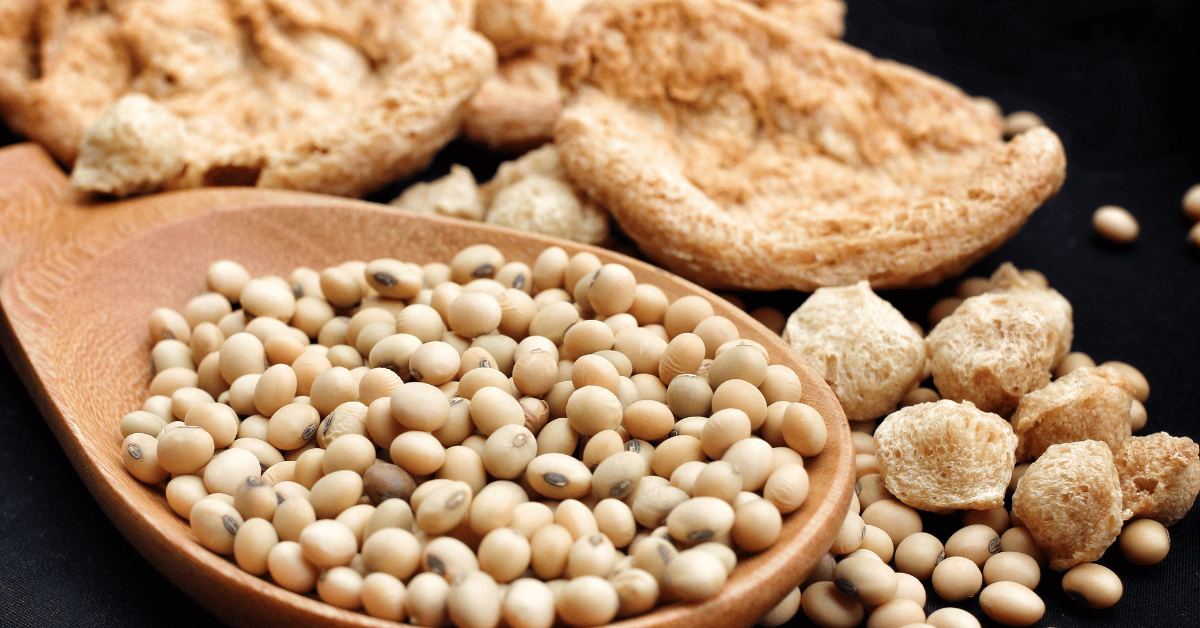As global health awareness and sustainable development concepts deepen, the plant-based protein market is experiencing explosive growth. As an “all-rounder” in the plant-based protein family, soy protein has become a core raw material for food enterprise transformation and upgrading, leveraging its nutritional, functional, and economic advantages. It not only shoulders the mission of optimizing food texture and enhancing nutritional density but also serves as a strategic choice for building a sustainable food system.
Core Advantages of Soy Protein
Diverse Functionalities: Soy protein isolate has six core functions through its unique molecular structure: emulsification can stabilize food systems, such as delaying lactose crystallization in ice cream; hydration gives meat products excellent water retention capacity, increasing product yield by 20%; oil absorption can lock fat and reduce processing losses; gelling provides elastic skeleton for flour products and prolongs shelf life; foaming gives baked foods a fluffy structure; and film formation optimizes the texture of bionic foods. These characteristics provide food companies with a technical fulcrum from basic processing to high-end product development.
Cost-Effective Economic Value: Compared to animal protein, soy protein reduces raw material costs by 30%-50%, with stable supply supported by mature large-scale cultivation and processing technologies. For example, plant-based meat products using soy protein as the base have production costs only 60%-70% of traditional meat, significantly improving corporate profit margins.
Market Diversification Leverage: As a complete protein source, soy protein contains all 8 essential amino acids and is cholesterol-free. Studies show that daily intake of 25 grams of soy protein can reduce low-density lipoprotein cholesterol by 10%-15%, while its isoflavones promote bone density improvement. This makes it an ideal ingredient for dairy alternatives, functional beverage fortification, and senior nutrition products.
Diverse Application Scenarios in the Food Industry
Quality Enhancement in Traditional Sectors: Adding 2%-5% of protein isolate in meat processing can significantly improve the juiciness and sliceability of ham, meatballs, etc; adding 3% in pasta products can increase the tensile strength of noodles and reduce the cross-section rate; replacing 10%-20% of milk powder in dairy products can optimize the melting resistance and taste of ice cream.
Innovative Breakthroughs in Imitation Foods: Through texturization processes, soy protein can be transformed into intermediate products like textured soy protein and high-moisture extruded protein, further processed into vegetarian steaks and imitation shrimp. Research shows that replacing 20%-40% of fish meat in surimi products maintains elasticity and chewiness while cutting costs by over 30%, meeting the 22.6% annual growth demand in the vegetarian market.
Precision Nutrition for Special Diets: With mild allergic feature and superior nutritional quality, soy protein is a unmissable choice in dietary supplements designed for post-surgical recovery and muscle development. Its leucine content surpasses animal proteins by 15%, which significantly accelerates muscle tissue repair and growth, solidifying its status as a cornerstone ingredient in sports nutrition formulations.
Advantages of low carbon and circular economy
In the context of the global climate crisis and resource depletion, soy protein has become a key driver for the sustainable development of the food industry with its low carbon footprint and resource efficiency. Compared with animal protein, the land area required for soybean cultivation is reduced by 60%, and the greenhouse gas emissions per unit of protein production are only 1/10 of beef. In addition, by-products such as dregs of soy protein can be processed into degradable packaging materials or pet food ingredients, achieving ‘zero waste’ in the entire chain.
From plant-based milk at breakfast tables to protein supplements in space food, soy protein is transcending traditional food industry boundaries. Driven by dual values of health and ecology, soy protein is evolving from a conventional additive to a strategic cornerstone. Future efforts should focus on technological innovation to break through homogenization, build integrated industrial chain mechanisms, and craft a Chinese solution in the plant-based revolution.
Contact
Arkera Inc.
Email: info@cnbreading.com
WhatsApp: +86 136 8369 2063
Web: https://www.cnbreading.com/
Post time: Apr-08-2025

